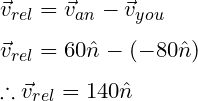Hi physics lover, Do you know magnitude is a pure number that defines the size(How Much) of a physical quantity! For example, if your mass is 60 kg, then 60 is the magnitude of the mass. And kg is the unit of mass.
1. Suppose you are moving from position A to B at a speed 10 m/s. Then, the magnitude of your speed will be 10.
2. Suppose you are applying 100-newton force on an object. In this case, 100 is the magnitude of the force.
By looking at these three examples above, you can understand that in order to describe a physical quantity, you need to know the magnitude and unit of that physical quantity.
Since magnitude refers to numbers, the magnitude can be positive, negative, and float.
How to Calculate Magnitude of a Physical Quantity?
A physical quantity is a measure. So, every physical quantity has magnitude.
However, the magnitude of each physical quantity cannot be determined in the same way. Because physical quantity is of two types scalar and vector. And both quantities follow different algebraic rules.
1. Scalar Quantity
A scalar is a physical quantity that has only magnitude. For example, mass, temperature, density, volume, etc. And to define scalar quantity, you need to know magnitude and unit.
And in the case of scalar, to calculate magnitude, you have to follow the linear algebraic rule.
2. Vector Quantity
Vectors are those physical quantities whose magnitude and directions are both presents. For example, velocity, displacement, force, etc. And when defining a vector, you should not just write magnitude, you should also specify the direction.
When you calculate the magnitude of a vector, you don’t have to follow the linear algebra rules. Because you have to follow the rules of vector algebra in this case.
So, you noticed that different algebraic rules have to flow to define the magnitude of both types of physical quantities.
How to Calculate Magnitude of a Scalar?
Here are some real-life examples to help you understand. Scalar magnitude calculation is very simple which we do every day. We calculate scalar magnitude 90 percent of the time in real life. For example
1. Suppose you take a bus journey from New York to Boston. When you arrived in Boston, a friend of yours asked you, “How much distance did you travel in total?”
And when you tell your friend I have traveled 346 km. In this case, 346 km is the magnitude of the distance.
2. Suppose you mix 250 ml of water in one liter of pure milk. Then now your total amount of milk will be 1250 ml. In this case, the calculation of magnitude has followed the rule of simple addition.
3. You bought a dozen bananas from a fruit shop for one dollar per banana. And in this case, your total bill will be 12 dollars.
So, calculate the scalar’s magnitude in this simple way. That is, what we do all the time.
How to Calculate Magnitude of a Vector?
Vectors will not follow the rules of general algebra. To determine the magnitude of a vector quantity, you have to follow the rules of vector algebra.
1. Suppose you are sitting in a moving train with a velocity of 80 m/s. And another train is coming from the opposite direction with a real velocity of 60 m/s. But when you look at that train, the train goes out of your side at a very fast speed. And then when you are asked what was the velocity of your respect other train?
In this case, the concept of relative velocity will come. That is, your respect will be the velocity of the other train
In this case n is the unit vector towards the trajectory of the other train. And here the magnitude of relative velocity is 140 m/s.
2. Suppose you apply n Newton force on a wall. Whose direction is along the east side. So what will be the magnitude of the normal force through the wall?
You all know that according to Newton’s third law every action has the opposite reaction. According to the question, the wall will also give you n Newton force as an opposite reaction. Whose direction is along the west.
Conclusion
The theory is not discussed in the case of the above vector and scalar problems. That is, the tutorial is based on the fact that you have knowledge of scalar and vector algebra. If you have difficulty understanding this vector calculation, please read Vector Algebra.
Of course, you understand what is magnitude in physics!



it is very useful keep sending such kind of physics problems and physical definitions and basic information about various concepts of physics thank you so much